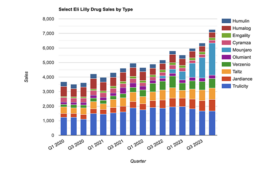Researchers have identified a molecule that may be more accurate than existing biological signposts used to predict which breast cancers will develop into advanced forms of the disease. Detailed in an early online edition of the International Journal of Cancer, the discovery could one day influence therapy decisions and prevent patients from unnecessarily undergoing aggressive cancer treatments.
When diagnosing breast cancer, pathologists currently look for elevated levels of three standard molecules known to make tumors grow in the breast. These molecules—estrogen receptor (ER), progesterone receptor (PR) and HER2—are used as “biomarkers” for diagnosis and individually detect only a fraction of breast cancers.
“The problem with these biomarkers is that many of them are present at some level in the normal breast,” says Georg Weber, MD, PhD, lead investigator of the new study and associate professor of pharmacy at the University of Cincinnati. “In addition, they are surface molecules that support growth so they are not necessarily a good predictor of tumor metastasis.”
Weber and his team have identified a molecule, osteopontin-c, that is absent from the normal breast and appears to more accurately predict breast cancer that will become metastatic and spread to distant organs from the original tumor site.
Release date: Nevember 5, 2007
Source: University of Cincinnati
Filed Under: Drug Discovery




